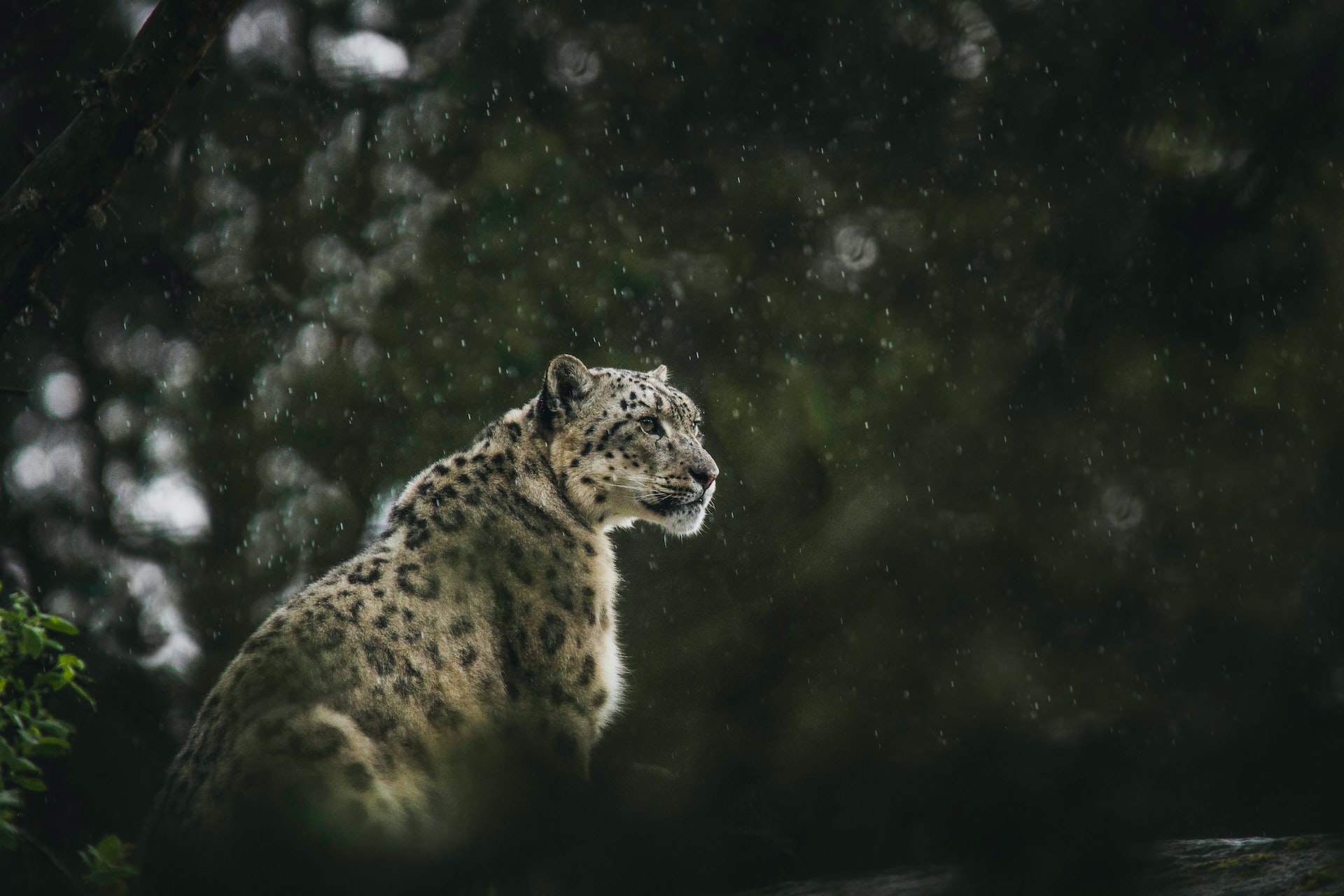
Are Snow Leopards Endangered?
We are reader-supported. When you buy through links on our site, we may earn affiliate commission.
The year is 2009. In Afghanistan’s newly minted first national park, one can hear the sound of cattle, of hooves scraping on talus as ibex weave between the sapphire-blue lakes, the cries of wolves in the distance. But there’s no sign of the world’s most elusive big cat.
Often called ghosts of the mountains due to their white fur and mysterious nature, snow leopards face numerous threats in the form of habitat loss, poaching and negative interactions with humans. Being listed as endangered is a legality — the leopards are, in fact, at risk of disappearing, and earning their status as permanent ghosts.
Vulnerable vs. Endangered
While snow leopards are not technically considered endangered — they’re listed as vulnerable on the IUCN Red List — the cats aren’t out of the woods yet. Vulnerable is just one step above endangered, and means the species is at risk of becoming extinct in the wild.
Downgrading the snow leopard’s status from endangered to vulnerable in 2017 sparked a debate about formalities. There is a thin, tenuous line that species walk between being deemed safe or jeopardized. A lot of it comes down to making legal decisions about conservation. Either way, snow leopards are declining in the wild. These are the main factors impacting their survival:
1. Habitat Loss
Snow leopards (Panthera uncia) inhabit rocky, alpine and subalpine terrain in Central and South Asia. Some of the forested areas they live in have been cut down to harvest wood. Other parts of their range have been turned into farmland for grazing livestock. Climate change may further shrink the alpine zones that snow leopards inhabit.
The development of human infrastructure, such as roads, houses, airports and mines, also disturbs snow leopards.
Nepal, for example, is making important strides in the realm of economic development by building more roads. But these roads, unfortunately, cross snow leopard territory, fragmenting it and making it harder for the cats to disperse. The settlements that will inevitably crop up alongside the new roads will further drive snow leopards away.
Mitigating climate change will go a long way towards protecting snow leopard habitat. Relying less on wood as a fuel source could also help, since it would reduce the number of trees that need to be harvested.
2. Poaching
Poachers target snow leopards for their skin, organs and bones, which fetch a high price as ingredients in traditional medicine. These body parts are, of course, inert — they have no medicinal value — but as long as customers are willing to pay, poachers are willing to risk hefty fines to trap and shoot snow leopards.
Tourist shops also sometimes sell snow leopard pelts to foreign visitors. Such souvenirs are illegal in every country that snow leopards inhabit. However, since travelers shell out a lot of cash for this type of exotic memento, there is a market for it.
Poaching is a nuanced issue with a more complicated origin than greed. Many poachers are extremely poor and are trying their best to provide for their families, even if it means killing a rare animal. Given the choice between potentially starving to death or killing a leopard, which could fetch a high price on the black market, almost anyone would become a poacher.
To stop poaching, governments must address the critical human rights issues that lead to poverty. Governments should focus not only on educating communities about the importance of conserving snow leopards, but also provide alternative means of income for poor families.
Furthermore, governments need to crack down on the people who purchase animal parts, since they’re the ones driving the illegal wildlife trade in the first place. Take away the customers, and the market falls apart.
3. Retaliatory Killing
Farmers rely heavily on livestock as a source of income. When a snow leopard preys on a farmer’s goat, it’s directly hurting his livelihood and taking valuable food off the table. In response, many livestock owners will retaliate by killing the leopard, both out of anger and a fear that the predator will return.
Snow leopards usually kill domestic animals when prey is scarce. They don’t like being around people, and are terrified of dogs. Farmers should take preventative measures, such as owning livestock guardian dogs, to keep snow leopards from killing their animals so they don’t have to resort to shooting them.
Livestock guardian dogs live outside with a herd of sheep, goats or other prey animals, and have a strong protective instinct. In many cases, their barking alone is enough to scare away potential predators. Livestock owners should fully vaccinate these dogs to prevent them from spreading diseases to local wildlife. They should also employ the use of electric fences to keep predators out.
4. Prey Loss
Snow leopards naturally prey on wild sheep and goats, marmots, pikas, deer and wild hogs. The wildlife trade threatens some of these species, which are illegally hunted. Their decline means fewer resources are available for snow leopards. The cats must then turn to livestock for food, and this, as discussed, is a major reason people kill snow leopards.
Overgrazing by livestock reduces the habitat of prey species. Livestock also carry diseases that spill over into wild animal populations, further reducing their numbers. Domestic sheep, for example, can carry diseases that strongly affect their wild counterparts, which are not vaccinated or treated for any illnesses. A simple case of mange could be severe for a wild animal that has never been exposed to it.
Feral dogs also pose a huge threat to snow leopards’ primary prey sources. In Chitral Gol National Park in Pakistan, stray dogs have killed 392 markhors — a type of wild goat with massive, spiraling horns — in the last 15 years. Dogs kill more livestock in the Himalayas than snow leopards and wolves combined. This further contributes to prey loss for snow leopards.
The solution is to trap and sterilize feral canines. Animal control must make efforts to remove feral dogs from national parks and other protected wildlife areas. Additionally, governments should emphasize responsible dog ownership. People need to keep their pets contained, collared and spayed or neutered so as not to contribute to the problem.
Farmers must vaccinate their livestock herds against diseases that could spread to wildlife. Governments also need to take steps to bolster the populations of snow leopards’ prey species.
5. War
In war-ravaged countries like Afghanistan, snow leopard conservation is not a priority. War has indirect effects on animals — people put conservation efforts on the back burner to address pressing human rights issues. But it also has direct consequences, such as landmines killing animals or the sound of gunfire driving them away. Additionally, people displaced by war have to find fuel, food and shelter. They often overharvest natural resources as a means of survival.
Afghanistan established its first national park in 2009, a step in the right direction for snow leopard conservation. Although the cats no longer live among Band-e Amir National Park’s clear blue lakes and rugged mountains, the fact that a country hobbled by civil unrest set aside a natural space for conservation is remarkable. It provides a glimmer of hope for the future of snow leopards in the region.
Are Snow Leopards Endangered? Not Just Yet
Snow leopards have been endangered in the past, and they can be again. Governments and conservation groups must address numerous factors such as feral dogs, poaching, climate change and prey declines to save the ghost of the mountains.
Share on
Like what you read? Join other Environment.co readers!
Get the latest updates on our planet by subscribing to the Environment.co newsletter!
About the author

Jane Marsh
Starting from an early age, Jane Marsh loved all animals and became a budding environmentalist. Now, Jane works as the Editor-in-Chief of Environment.co where she covers topics related to climate policy, renewable energy, the food industry, and more.





